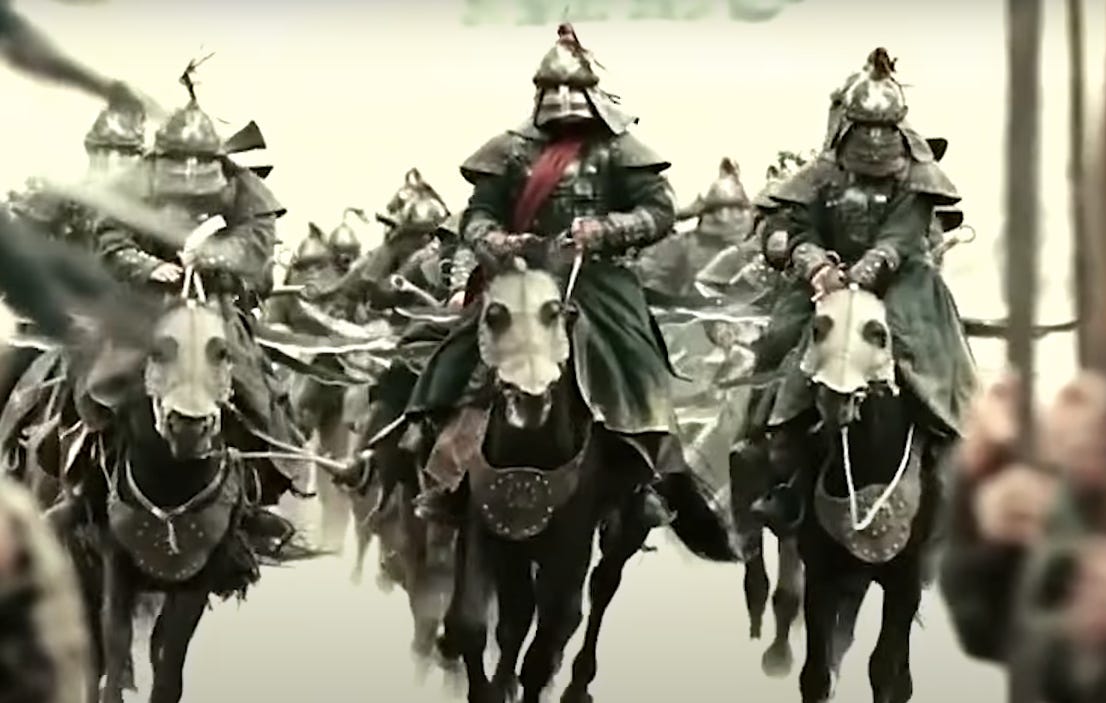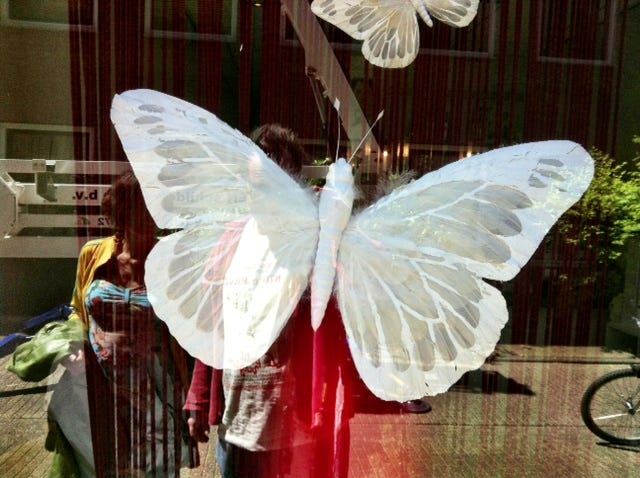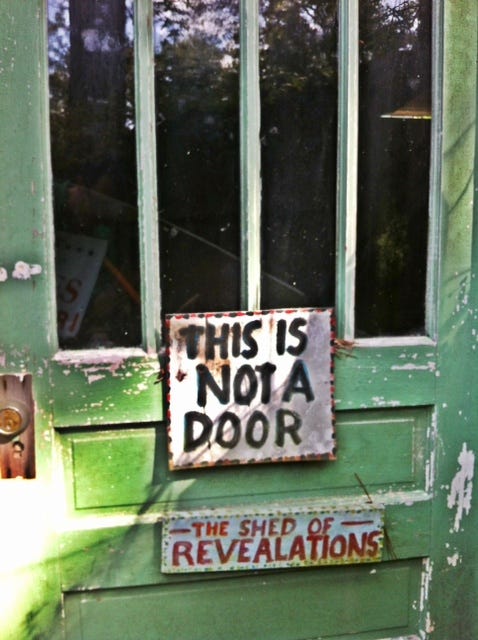In the New Yorker, the critic James Wood engages a new book by the Stanford anthropologist T.M. Luhrmann, in which she seeks to explain what happens when people pray. Wood is an atheist who grew up in the home of British Evangelical parents. He takes Luhrmann seriously, though he has serious and valid questions about her claims. Excerpt:
Her new book, “How God Becomes Real” (Princeton), represents a distillation of that deep work on American Evangelicalism, and expands her acute discussion of spiritual practice across other forms of religious devotion that she has studied or encountered over the years—charismatic Christian worship in Ghana and India, Santería (“a blend of Yoruba spirit possession and Catholicism that emerged among West African slaves in the Caribbean”), and British witchcraft (Luhrmann’s first book, “Persuasions of the Witch’s Craft: Ritual Magic in Contemporary England,” from 1989, was the product of field work among apparently ordinary Londoners who practiced magic and witchcraft).
This comparative framework suits Luhrmann, precisely because she is not interested in the questions that so gripped me when I was young: what or who is God, and how can we know if this God exists? Luhrmann passes over questions of belief in search of questions of practice—the technologies of prayer. She wants to know how worshippers open themselves up to their experiences of God; how they communicate with gods and spirits and in turn hear those gods and spirits reply to them, and she is interested in the kind of therapeutic transformation that such prayerful conversation has on the worshipper. She calls this activity “real-making,” and adds that her new book is not a believer’s or an atheist’s, but an anthropologist’s work. “Rather than presuming that people worship because they believe, we ask instead whether people believe because they worship,” she writes. Thus “the puzzle of religion,” as she defines it, “is not the problem of false belief but the question of how gods and spirits become and remain real to people and what this real-making does for humans.” Whether these questions—of belief and of practice—can be separated quite as staunchly as she wishes is the “puzzle” that surely haunts her own work.
If you’ve read Luhrmann’s work (I have: her 2012 book When God Talks Back), you know that she is a serious social scientist. (Watch her TED talk here to learn more.) She does not condescend to her subjects, but as Wood points out here, Luhrmann cannot comfortably straddle the divide between faith and scientific rationality:
“These practices work,” she writes at the start of “When God Talks Back.” “They change people. That is, they change mental experience, and those changes help people to experience God as more real.” A page later, she writes that the most difficult problem that faces “anyone who believes or wants to believe in God” is “not whether God exists, in some abstract, in-principle, out-in-the-universe way, but how to find God in the everyday world and how to know that what you have found is God, and not someone else’s deluded fantasy or your own selfish wish.” This sounds like a reasonable caveat, but it’s something of a fudge. Can the practice of finding God be so easily separated from the crucial question of whether there is a God to find? Presumably, once you are convinced that the God you have found is not a “deluded fantasy,” you also believe that God exists, both as an abstract proposition and as an actual presence.
I can believe that people who pray, believing they are contacting God, or gods, might have more positive social outcomes than those who do not. But as Wood rightly avers, that doesn’t tell us whether or not God is real. It’s silly, though, to look to social science to answer that question. Perhaps Luhrmann is taking us as far as science can go. I’ll read this new Luhrmann book, because I enjoyed When God Talks Back so much (in part because it taught me about a world that is largely unknown to me, the world of Evangelicalism), but it sounds like this new book is frustrating in the same way as the previous one: the reader senses that Luhrmann wants to believe, but can’t let go of her rationality enough to surrender to the experience.
I understand. Faith is kind of like the bizarre but proven principle of quantum physics, which says that light is both wave and particle, but the act of observing forces it to cease being a wave and become a particle. In other words, observation changes the phenomenon. If you abstract yourself from the experience of religious faith in order to measure its effects, you in some sense distort the reality of what’s happening. It’s not a great analogy, I concede. I’m trying to get at what Wordsworth meant by his well-known line: “We murder to dissect.” That is, in order to understand the thing, we kill it.
Relatedly, Luhrmann’s work raises the old epistemological question: do we have to believe first in order to know? Kierkegaard famously said, “Truth is subjectivity.” He didn’t mean that truth is entirely relative. He meant that there are some truths that can only be known by living them out subjectively. The laws of physics and mathematics are not those kinds of truths. Whether or not life is worth living, or humans have inherent dignity, or whether God exists — all of those are truths that we can only know from the inside. Our problem is that we live in a culture that dismisses any truth claims that cannot be strictly proven by scientific rationality. Wood says Luhrmann’s new book notes that the experience of hearing God varies by culture, and that people who live in non-Western cultures have much richer and stranger (by Western standards) mystical experiences, because, perhaps, they are open to them.
If you want to read more, I posted something long back in 2014 about how we know what we know, and the implications of epistemology for our secular order. In it, I mentioned a visit I made in the summer of 2013 to a friend in Amsterdam, Miriam, who was dying of breast cancer. I went to tell her goodbye. Miriam was not a religious believer, at least not in any conventional sense, but shortly before I arrived, she had an experience with the hallucinatory drug ayahuasca, guided by a shaman there in the city. In the experience, she met her late mother, who had also died of breast cancer. Her mother nurtured her, and released her from the guilt she had carried since her mother’s death, which had haunted her and made something of a wreck of her life. By the time Miriam finished her story, I was sitting at her kitchen table sobbing.
Did she really meet her mother on a spiritual plane? Or was it all from inside her head? Honestly, I do not know. My Christian framework says it was inside her head, but in truth, I think either are possible. But boy, what a strange trip that was. Before I went to see Miriam, I was visiting a friend in the suburbs of Brussels, and heard her tell a story over dinner about her ancestors managing some sort of Caribbean plantation. The ancestors laughed at how superstitious the locals were, and how frightened the servants became when a white moth flew into the dining room at night. It was a symbol of death.
The next day, as I wrote in this 2013 account, my Brussels friend took me to the train station to head to Amsterdam to tell dying Miriam goodbye. The Brussels friend is a Christian, and asked me if we could pray together for Miriam. Of course, I said, and we did. Then, to our shock, a big, fat white moth bobbed into our field of vision over the train tracks. Moths are nocturnal, but this was midday. Then, a magpie swooped down and ate the moth. My friend and I were gobsmacked.
In Amsterdam, eating apple pie on a cafe terrace, I told that story to Miriam, without mentioning that we had been praying for her, and asked for her interpretation. As we walked back to her apartment, we passed a window on a side street, and saw this in the shop display:
That’s Miriam in the yellow sweater on the left. When we arrived back home, she told me the ayahuasca story. That was the last time I saw her alive.
Before I left for America, Miriam e-mailed this to me:
Your friend is going to find/meet “a way of life, a method, an insight” that will make her live on.
This “something” is eating death for her right now. It has to be close because she (your friend) already doesn’t take “reality” for granted but has her own wisdom and thoughts which make her look beyond.
I’m sure it means good news.
I wrote back to say I’m so relieved to hear that, because she was the person for whom my Brussels friend and I were praying. Miriam responded:
Wowie! I was hoping it would be ME!
So grateful!
She died on Christmas Day that year.
What happened between us? Did the prayer that my Belgian Christian friend and I offered for the dying Dutch friend open up a door to the world of spirit? Why would God work through symbols — a white moth devoured by a magpie — and synchronicities? This is where the Western mind goes wrong. We say to ourselves, It’s not logical that God would act that way, therefore it must not have been real. The more realistic mind is, perhaps paradoxically, more open to mystery and sacrament. Sometimes, it takes more faith not to believe than to believe.
The strangest experience I ever had in prayer happened many years ago, a few months before I became a Catholic. I can’t bring myself to tell you all the details, because they are far too intimate, but the experience was so uncanny that it became a bedrock of my own spiritual conviction. I have made choices in my life, choices that have cost me something, because of what happened that night. I haven’t fully cracked the mystery of it, though. Maybe you can help me with the part I can share with you.
It was the late winter of 1993. I was living alone in my apartment on Capitol Hill in Washington, DC. The phone rang. It was an old friend, in the grips of an intense spiritual crisis. He called to ask me for prayer. I was startled by the sound of his voice, and proposed that we hang up, pray separately for fifteen minutes to ask for guidance, then get back in touch to talk about what we thought God was telling us. I had only in the past year, maybe two, begun to take religion seriously, and was really treading in the dark here.
I fetched my crucifix from my bedroom, placed it on the futon sofa, knelt down by it, and began to pray for my friend. Then something happened that had never happened before, nor has happened since.
My sense of time completely left me. I became aware that I was seeing things in my mind’s eye that were not from within me. I have trouble describing the phenomenon, because it is hard to analogize something so singular. It was as if there were a film projector behind my head, projecting images onto a screen in my mind. It was uncanny; I felt I had no choice but to receive what was being poured out.
The things I saw involved the future, and they were very dark. As it happened, these things shed harsh light on the crisis my friend was having — a crisis over which of two diverging paths to take. As I said, these things are too private (and frankly, too weird) to discuss here, but I can tell you that a pure white lamb appeared in the sky at the height of the sequence. But then the vision shifted, and I saw horsemen galloping to war. I could not see them above their torsos, but I observed strange armor on them, and could feel the heat and the dust from their horses (I know what you’re thinking: no, these were not the Four Horsemen of the Apocalypse). I didn’t know what they were doing, but I knew that they were going to war.
Then I heard a strong inner voice say, “Don’t be afraid, for the Lion of the Tribe of Judah, the Root of David has triumphed.” Then whatever had me in its grip let go. I looked at my watch. Fifteen minutes precisely had passed. I had no sense of the passage of time as it was happening — and I had no idea what that Root of David business meant. I assumed it was a messianic title from the Bible, but what did I know? I was new at Christianity, and almost never read the Bible.
Trembling, I phoned my friend back, and told him what happened. In my words, he found the answer to his crisis. Though he was a far more serious Christian at that point than I was, he didn’t know what the Root of David line meant either. We were both men in our mid-twenties. I kept him on the phone for a while, because I was pretty shaken up by that mystical prayer experience, and didn’t want to be alone in my apartment. But it was a work night for me and a school night for him (he was in graduate school), so finally we had to say goodnight.
I was still too jittery to turn in, so I decided to do that rare thing, and read the Bible. I retrieved my Bible from my bedroom, sat down on the futon couch, and began to read one of the Gospels.
Then I felt a cool breeze blow across the left side of my face. Mind you, this was late January or early February. The windows were shut tight, and the heat was on. But there it was: a cool breeze. I felt it on my skin. As it passed over my face, it seemed to move through my mind too, and it left a word there: “Revelation 5:5”.
Well, you can imagine how shaken up I was by one more bizarre thing happening. I may not have known the Bible well, but at least I knew how to find the Book of Revelation. I turned to the fifth chapter, which is about the wedding feast of the Lamb (that is, a symbol of Jesus Christ) in heaven, near the end of time. Here are the first five verses of Revelation 5:
Then I saw in the right hand of him who sat on the throne a scroll with writing on both sides and sealed with seven seals. 2 And I saw a mighty angel proclaiming in a loud voice, “Who is worthy to break the seals and open the scroll?” 3 But no one in heaven or on earth or under the earth could open the scroll or even look inside it. 4 I wept and wept because no one was found who was worthy to open the scroll or look inside. 5 Then one of the elders said to me, “Do not weep! See, the Lion of the tribe of Judah, the Root of David, has triumphed. He is able to open the scroll and its seven seals.”
Well! I froze. There it was — the line from the vision! It was indeed a messianic title, one that appears in the Apocalypse, just before the opening of the Seven Seals.
Believe me when I tell you that I could not have known that in advance. It confirmed to me that what I had seen in the vision was truly from God. I had no doubt. I phoned my grad student friend at once and told him about it. I knew that what I had seen was true, and explained what was happening, and would happen.
And it has happened as I foresaw — the first part, anyway, the part I’m not talking about here. As I said, I have made decisions over the years based on what I saw, and on the confidence that this really was a mystical illumination from God, a revelation of what was happening beneath the surface of things. I would say that those decisions I’ve made, while costly at times, have been vindicated, and I believe my grad student friend (we’re still in touch) would too. What I saw has to do broadly with the spiritual disintegration and widespread confusion that has overtaken the West. My Christian grad student friend and I both interpreted the Lion of the Tribe of Judah line as assurance that whatever bad things were coming, we must not forget that God is in command, and that these things are part of the divine plan.
But I still did not, and do not, know what the horsemen symbolize. I looked up the Four Horsemen of the Apocalypse, who in fact show up in the Book of Revelation a few verses after the ones I quote (the opening of the First Seal occasions their appearance). It would make for a cleaner story if it was them that I saw, but the imagery does not fit what Revelation 6 says. Some years after this mystical happening, I was in a museum — I’m thinking the Museum of Natural History in New York, but maybe not — and saw imagery of armed Mongol horsemen from the era of Genghis Khan. Something very close to this was what I saw in the vision:
But what would that symbolize? War with China? That’s all I could figure. I have been holding that thought in my head for twenty years or longer, hoping that there would be an answer to the symbolism of the Mongol horsemen galloping to war.
This year, I have wondered if this Covid plague that has devastated the world was what I saw a symbolic foretelling of. Maybe that’s it. I rather hope so, because the prospect of war with China is too horrible to contemplate.
Whatever the truth, I do not doubt that in prayer that night in the winter of 1993, the veil parted, and a doorway of perception opened. I am certain that I would not have written these last two books if not for what I saw that night. Both The Benedict Option and Live Not By Lies are fairly dark books, in that they contemplate, in their different but complementary ways, the end of our civilization, and the birth of a new order. Had it not been for the strange event that night alone in my Washington apartment, I probably would not have been given to understand the events we have all lived through these last three decades in such an apocalyptic key. I might have been as confused as many people are today.
I could not have known it at the time, but the year I had that experience — 1993 — was the year just before religious belief among Americans began tumbling off a cliff:
Make of that what you will. I’m just going to say to you that based on what I saw that late winter’s night twenty-seven years ago, I have not been surprised by this, nor by its proximate causes.
In my books, especially this last one, I have emphasized strongly the difference between hope and optimism. Optimism says, “Things are only going to get better.” But that’s not necessarily true, and if you believe that, you will be unready for bad times. Hope, on the other hand, says that even if the worst happens, don’t be afraid, for the Lion of the Tribe of Judah, the Root of David has triumphed.
Since that event, nothing quite like it has happened to me. I do tend to have uncanny experiences, but nothing as overwhelming as that. I don’t know why it happened when it did, or why it hasn’t happened since. I did not seek it out that night, nor would I ever seek those experiences. Had it not been for the cool breeze on my face in the sealed apartment in the dead of winter, I would have no doubt convinced myself that everything I had seen in that vision was a hallucination, that somehow I generated the vision from something I wanted to see (though in truth, there is nothing about that terrible vision that fulfilled any desire, not even close — and as you’ve just read, I don’t fully understand all of it.)
I cannot possibly prove that what happened to me that night was objectively real. All I can tell you is that I was convinced that it was, and I have lived by the things revealed to me that night. I believed it was an objective truth received by me and appropriated with passionate inwardness, to use the Kierkegaardian terminology. And, as I said, I lived long enough to see the first part of the vision come true, even in its specifics, which I have not discussed here.
As for the Mongol raiders part, well, we shall see. It is possible that what I saw was a commentary on the devastation to Christian life and belief that came upon us starting around 1993: that it would descend with the ferocity of Mongol hordes. It wasn’t until I became Orthodox, and in fact only in the past few years of studying Russian history, did I learn that the Mongols were so feared and loathed because they left nothing in their wake. They destroyed for the sake of destroying. It is clear to me that this is a plausible interpretation of what I saw: not a future event, but a characterization of the radical nature of the things I saw in the first part of the vision.
But I just don’t know. Maybe you can figure it out. It remains a mystery.
I don’t make a big deal of that event because I don’t like it when people claim that “God told me to do this” or “God showed me that.” Almost always that means that they managed to convince themselves that God blesses what they wanted to do in the first place. But sometimes, He really does show us things. God is everywhere present, and fills all things. Prayer opens a channel. We should not be surprised if, when we talk to God, that sometimes, He talks back. He may not use the language we wish He would use, but that doesn’t mean He has not spoken — if we have ears to hear.
Readers, I am leaving on Tuesday morning to drive to Nashville for a conference. It’s a daylong drive, and I am probably going to be bushed when I get there. Will you help me write tomorrow night’s newsletter? Please e-mail me your uncanny experiences with prayer, or with mystical phenomenon. What did you learn from them? How did you come to believe they were true? Or did you later discern they were false — and if so, why? E-mail me at roddreher — at — substack.com, and I’ll post the best of the lot. I won’t identify you by name unless you ask me to.







